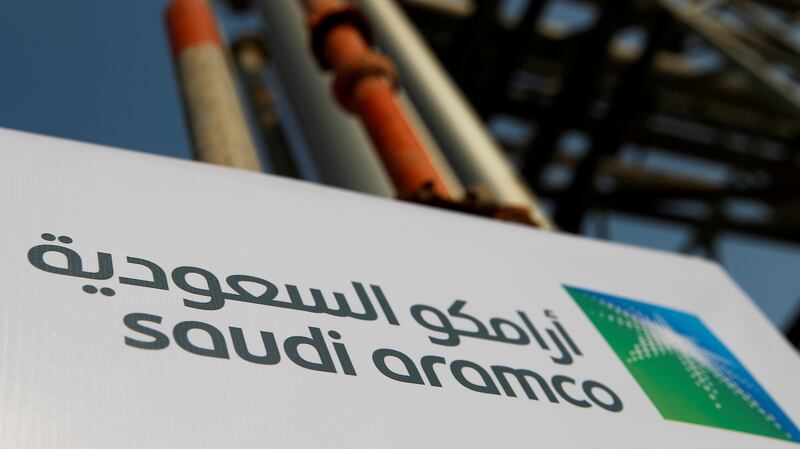Saudi Aramco, the world's largest oil-exporting company, said second-quarter net profit nearly quadrupled, boosted by higher crude prices amid a broader recovery in global demand.
Net profit rose to $25.45 billion, from $6.56bn in the same period a year ago, due to "higher crude oil prices, improved refining, and chemicals margins and the consolidation of Sabic's results", the company said in a statement to the Tadawul exchange, where its shares are traded.
The company declared a dividend of $18.8bn for the second quarter after revenue for the three-month period to the end of June rose by more than 123 per cent to $83.29bn.
“Our second-quarter results reflect a strong rebound in worldwide energy demand and we are heading into the second half of 2021 more resilient and more flexible as the global recovery gains momentum," said Aramco president and chief executive Amin Nasser.
"While there is still some uncertainty around the challenges posed by Covid-19 variants, we have shown that we can adapt swiftly and effectively to changing market conditions."
The company is on track to raise crude production capacity to 13 million barrels per day, Mr Nasser told reporters in a call. He also expects crude oil demand to nearly match pre-Covid levels, reaching 99 million bpd by the end of the year.
The company generated $22.6bn in free cash flow during the second quarter, compared with $6.1bn for the same period last year.
Aramco expects 2021 capital expenditure to reach $35bn. Capex for the three-month period ending June 30 rose by 20 per cent to $7.5bn.
The company attributed the increase to the start of the initial phases of construction and procurement activities relating to increment projects and the consolidation of Sabic's capital expenditure.
Aramco completed the Ain Dar and Fazran crude increment projects in the second quarter.
The company owns a 70 per cent stake in Sabic, the Middle East's largest chemicals producer. Last week, Sabic swung to profit in the second quarter, earning $2bn amid higher selling prices, after posting a $592 million in the same period last year.
The reopening of major economies has helped oil prices gain about 40 per cent since the start of the year, boosting the profitability of big oil companies. Brent, the benchmark under which two thirds of global oil trades, settled 0.83 lower at $70.70 a barrel on Friday.
West Texas Intermediate, which tracks US crude grades, closed 1.17 per cent lower at $68.28 a barrel.
"There are two variables right now, oil price and the quantity. The average consensus for the second half is still high, above $70 per barrel, so this is very healthy," said Mazen Al Sudairi, head of research at Riyadh-based Al Rajhi Capital.
"You might see oil range between $67-73 per barrel, so the volatility is limited. And quantity is set to increase. So oil prices will be more stable with lower volatility and that will drive the earnings in the second half," he added.
Last week, BP swung to profit in the second quarter amid higher oil prices and a broader recovery in the global economy this year.
Aramco is also opening up its assets to foreign investors, attracting $12.4bn from a consortium led by EIG Global Energy Partners for its oil pipelines.
"Our historic $12.4bn pipeline deal was an endorsement of our long-term business strategy by international investors, representing significant progress in our portfolio optimisation programme," said Mr Nasser.
"Our landmark $6bn sukuk reinforced our robust balance sheet, further diversifying our funding sources and expanding our investor base. And, once again, we delivered a dividend of $18.8 billion for our shareholders."
"With the oil prices higher than a year ago and profits soaring for the energy company, it is highly possible for the company to maintain its current dividend payout going forward," said Vijay Valecha, chief investment officer at Dubai-based Century Financial. "Another reassuring fact is that the oil giant is backed by the Saudi government that owns 98 per cent of the stock and is unlikely to trim its payouts."
In June, the company raised $6bn through its first US dollar-denominated sukuk issue.
Aramco's profitability was also boosted by the state oil producer's compliance with Opec+ restrictions on crude production.
Crude production averaged 11.7 million barrels of oil equivalent per day in the second quarter of the year, in line with Opec+ curbs.
In July, Opec+, which is headed by Saudi Arabia and Russia, agreed to bring 400,000 bpd back to the markets from August onwards. The group is phasing out of 5.8 million bpd of withheld supply and will maintain its agreement until December 2022.







